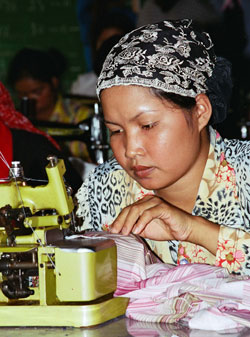
Reproductive Health of Global Supply Chain Workers
Overview
The dependence of global economies and export-led development models on the labor of women workers often evades notice. In many countries women represent the vast majority of the workforce in global export-processing factories, yet gender-specific legal and health needs of women workers are seldom addressed. International codes of conduct include anti-discrimination and women's health clauses; however, monitoring and training activities do not adequately consider the demographics of the workforce. A more systematic approach is needed to effectively address women workers' needs, a necessary pre-condition for bringing factories into compliance with codes of conduct. Similarly, the global reproductive health agenda does not give adequate attention to the role of women in the labor force or the needs of factory workers -- who are often adolescents, immigrants, and poor.
The health of working women and the economic health of their countries cannot be separated. Improving reproductive and sexual health is crucial to continued progress towards attaining the United Nation's Millennium Development Goals (MDGs). Four of the eight MDGs - the promotion of gender equity and the empowerment of women (Goal 3), reduction of infant mortality (Goal 4), improvement of maternal health (Goal 5) and building of a global partnership for development (Goal 8) - are intrinsically linked to this intersection of labor, health and law. Although Indicator #11 for Goal 3 relates to increasing the share of women in wage employment in the non-agricultural sector, a comprehensive strategy for ensuring that the reproductive health needs of these wage earners are met has yet to be articulated.
As part of an effort to increase dialog about and attention to the reproductive health needs of global supply chain workers, this website brings together the limited literature on this topic, providing a bibliography of program reports and the emerging (though still scant) scientific research. We welcome your feedback and recommendations.